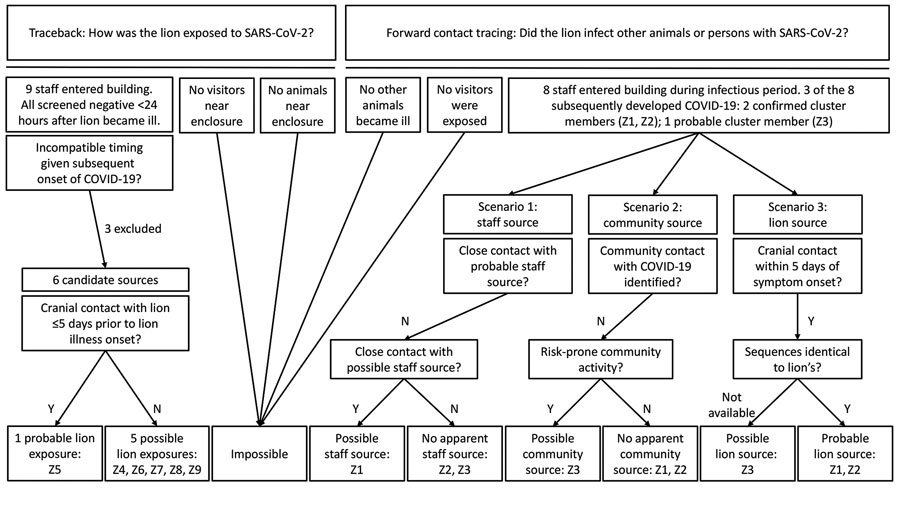Volume 29, Number 6—June 2023
Synopsis
Probable Transmission of SARS-CoV-2 from African Lion to Zoo Employees, Indiana, USA, 2021
Figure 1

Figure 1. Traceback and forward contact tracing investigations of SARS-CoV-2 transmission between an African lion and zoo employees, Indiana, USA, 2021–2022. The traceback investigation narrowed the potential source of the lion’s SARS-CoV-2 infection to 6 zoo employees who had lion contact within 10 days, 1 of whom (employee Z5) had cranial contact within 5 days of the lion’s illness onset but did not have close contact with employees Z1, Z2, or Z3. Possible human sources were identified for Z1 (close occupational contact with Z7) and for Z3 (community activity), although in neither case were these potential sources shown to carry the virus. Employees Z1, Z2, and Z3 all had symptoms and had confirmed SARS-CoV-2 infection 3 days after their most recent cranial contact with the sick lion.
1Current affiliation: Fresno Chaffee Zoo, Fresno, California, USA.